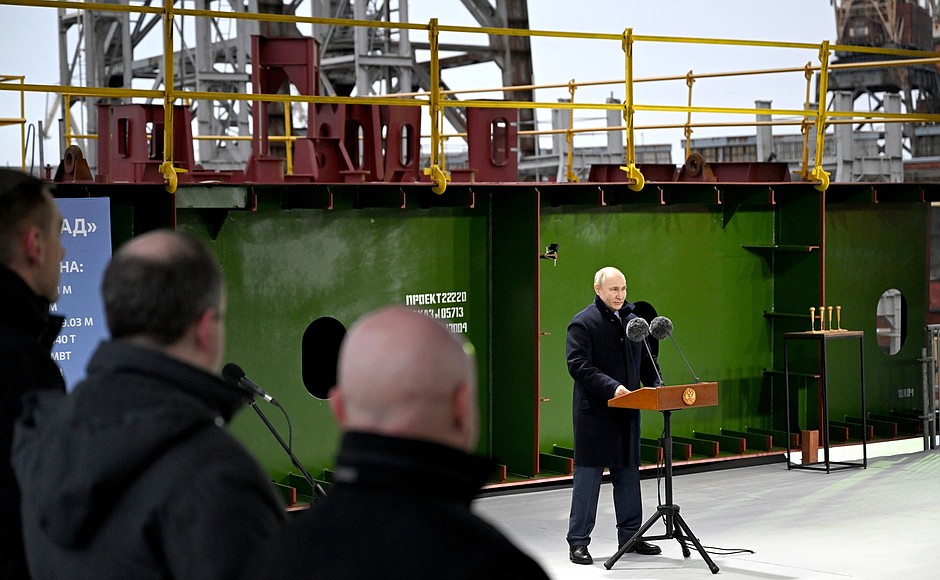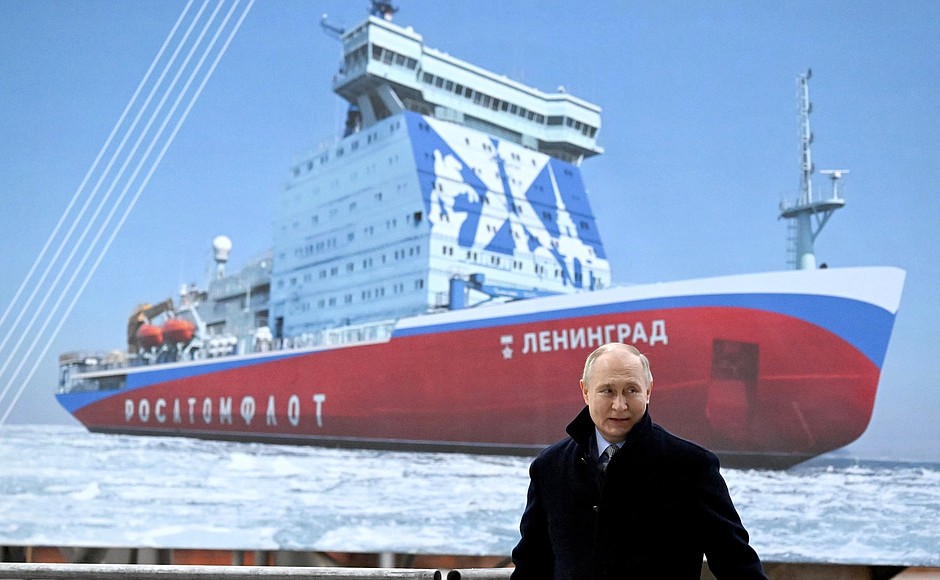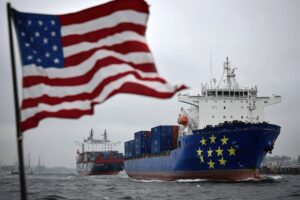
Photo credit: Pavel Bednyakov, RIA Novosti
Vladimir Putin took part in the keel-laying ceremony for the multipurpose nuclear-powered icebreaker Leningrad at the Baltic Shipyard in St Petersburg.
The ship will be built as part of the Development of the Northern Sea Route federal project. It will be the fifth serial or the sixth Project 22220 nuclear-powered icebreaker.
The Russian icebreaker fleet includes 34 diesel and 7 nuclear-powered icebreakers, namely, the lead ship Arktika and the nuclear-powered icebreakers Sibir, Ural, Yamal, 50 Let Pobedy, Taymyr and Vaygach.
Last week, the Russian President Vladimir Putin attended the keel-laying ceremony for the nuclear icebreaker in the Project 22220 series.
The event took place at Baltic Shipyard in St. Petersburg, and Putin emphasized that the new vessel will help enable more trade along the Northern Sea Route.
The nuclear icebreaker Leningrad will become the fifth ship in its series.
After it is completed, it will sail along the Northern Sea Route, participate in important programmes to develop and study the Arctic, and ensure the delivery of cargo, construction materials and fuel.
Vladimir Putin, the Russian president, said during the ceremony: “Russia has an unparalleled icebreaker fleet, the largest in the world, which is an enormous competitive advantage for us that opens vast opportunities for developing logistics and industry, creating new jobs, carrying out the integrated development of Arctic urban and rural areas, implementing truly global projects, and pursuing cooperation with our international partners and friends, and everyone who is willing to work with Russia.
“I was in Chukotka not long ago, met with people and talked to the region’s leaders. Chukotka, Yamal, Taymyr, Yakutia, and all our other Arctic regions cannot wait to see new powerful icebreakers and other large ice-class ships entering service.
“Without a doubt, we will work consistently to address these tasks, to expand our Arctic fleet, and to set new ambitious benchmarks for ourselves.”



